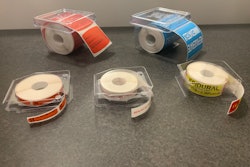Quick hits:
- A cGMP-compliant firm continually assesses its systems to ensure it remains in a state of control.
- Operators are the main cause of safety failures due to improper cleanroom behaviors.
- Other main causes are facility, room and process design; smoke studies; and media fills.
- Pitfalls to Avoid in FDA Aseptic Manufacturing Inspections
- FDA's Guidance for Industry: Sterile Drug Products Produced by Aseptic Processing
- Aseptic Processing: A Primer
 | Read the transcript below: |
Hi, I’m Melissa Griffen, Contributing Editor for PMG. Aseptic processing is one of the highest risk pharmaceutical operations, with severe consequences to lack of control over the sterile drug and container closures and components as well as inadequate observing of cleanroom standards.
In the midst of the COVID-19 pandemic, this can be especially appreciated as aseptic processing is crucial for injectables, including vaccines.
At the recent 2021 PDA/FDA Joint Regulatory Conference, Brooke K. Higgins, MS, senior policy advisor, CDER, U.S. FDA presented on recurring deficiencies and safety failures found during FDA aseptic manufacturing inspections, both in the U.S. and globally, along with possible solutions.
Higgins notes that a current Good Manufacturing Practices-compliant firm must continually assess its systems and take action in a timely manner to ensure that it remains in a state of control—this includes the facility, equipment, and the process.
FDA’s Guidance for Industry on sterile drug products produced by aseptic processing can be found at the link on the screen: https://www.fda.gov/media/71026/download.
In a BioPharm International article, “Aseptic Processing: A Primer,” it says that “much of the aseptic process depends on the scale of training and attitudes of the people involved.” This is the first main cause of contamination spoken of by Higgins that the FDA has observed during inspections. She noted that humans shed almost one billion particles per day, which may land on the aseptic processing line and even inside the sterile drug.
For this reason, sanitation guidelines cannot be a one time training. Higgins said that personnel should be frequently reminded of cleanroom procedures and behaviors, and that management should be continually monitoring to ensure proper performance.
Other main causes of contamination observed during inspections were the facility, room, and process design and issues surrounding smoke studies and media fills.
A significant design issue frequently encountered involves the use of older facilities, which oftentimes have processing lines and facility layouts that are less effective at mitigating operational variables that pose a risk to sterility. FDA has seen older facilities implementing curtains or rigid plastic enclosures to separate critical processing areas from the rest of the facility, but these struggle to meet cleanroom standards and tend to require extensive manual interactions with the aseptic processing line. Higgins further explained that if equipment is not well designed or is poorly maintained, it also requires substantial manual interventions due to mechanical issues.
Smoke studies are a means of review that FDA is placing increasing emphasis on as they verify the sterility of a line effectively when performed properly by illuminating design weaknesses that pose contamination hazards. The problem is that smoke studies are commonly not performed properly. Smoke studies can not be dynamic enough, lack simulation of multiple critical interventions, have non-unidirectional airflow, or inadequate visualization of airflow.
One issue surrounding media fills is poor investigations into failures, which lack scientifically supported conclusions and CAPAs and fail to address all potentially compromised lots. Higgins notes that FDA is continuing to see media fills needing investigations to explain media fill failures. She suggested that companies incorporate a retrospective review of inherent critical interventions performed during production and a risk assessment of new interventions that have been performed from previous media fill studies to have successful investigations.
Thanks and see you next time on Take Five with Packaging World.






















